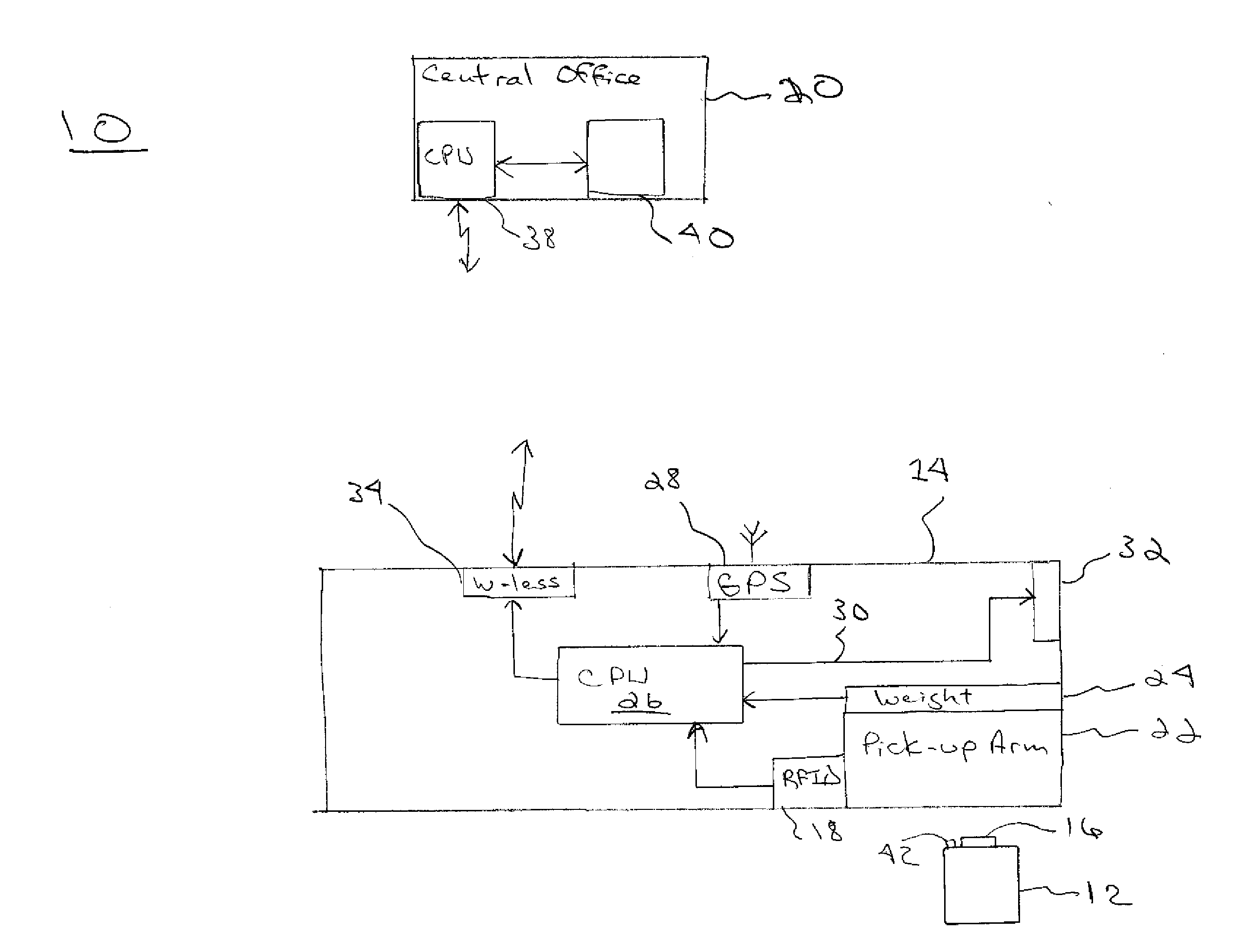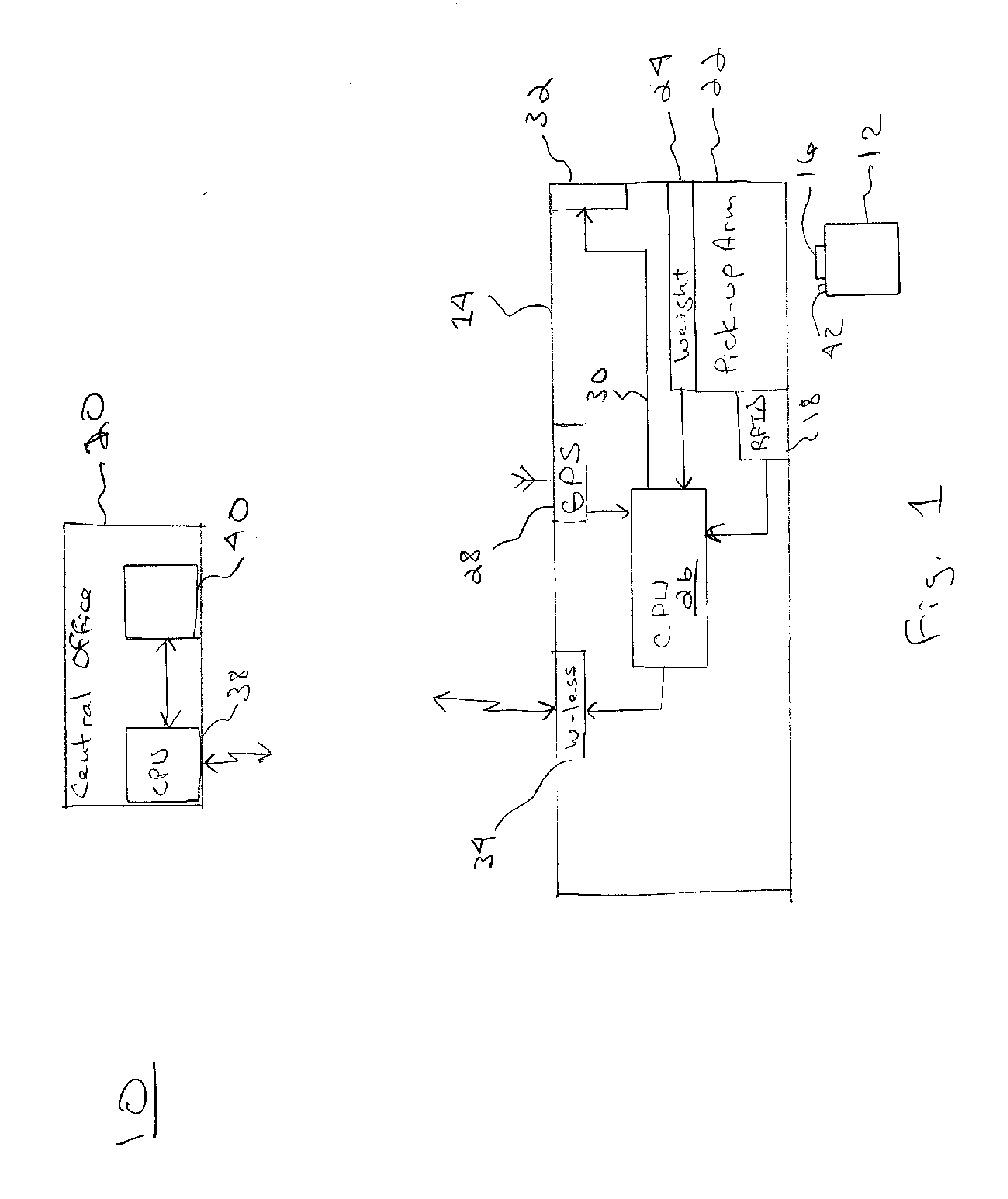System and method for associating RFID smart labels with customer database records for use with automated tracking of waste and recyclable material
a technology of smart labels and customer database records, applied in the field of tracking materials, can solve the problems of large maintenance overhead, limiting the pace of deployment of rfid waste and recyclable material collection technology, and no automated method of associating waste or recyclable material containers rfid tags with specific customers
- Summary
- Abstract
- Description
- Claims
- Application Information
AI Technical Summary
Benefits of technology
Problems solved by technology
Method used
Image
Examples
Embodiment Construction
[0043]The present invention relates to a system and method for relating or associating a customer RFID enabled waste bin identification information with customer specific information at the waste company central office and not in the field. The present invention is operated in connection with a system 10, FIG. 1, implementing an automated tracking of waste and recyclable material. The system includes 3 major components: a trash or recyclables container 12 located in front of a residence or business; a mobile truck and pick-up vehicle 14 and a central office 20.
[0044]The container 12 may be any type of container which is configured or lends itself to automated pickup using a pickup arm or the like controlled by an operator operating a truck-like pickup vehicle 14 which is described in greater detail below. Such containers are well-known in the industry to those of ordinary skill in the art.
[0045]The container 12 includes a radio-frequency identification (RFID) tag 16 or other similar...
PUM
 Login to View More
Login to View More Abstract
Description
Claims
Application Information
 Login to View More
Login to View More - R&D
- Intellectual Property
- Life Sciences
- Materials
- Tech Scout
- Unparalleled Data Quality
- Higher Quality Content
- 60% Fewer Hallucinations
Browse by: Latest US Patents, China's latest patents, Technical Efficacy Thesaurus, Application Domain, Technology Topic, Popular Technical Reports.
© 2025 PatSnap. All rights reserved.Legal|Privacy policy|Modern Slavery Act Transparency Statement|Sitemap|About US| Contact US: help@patsnap.com



